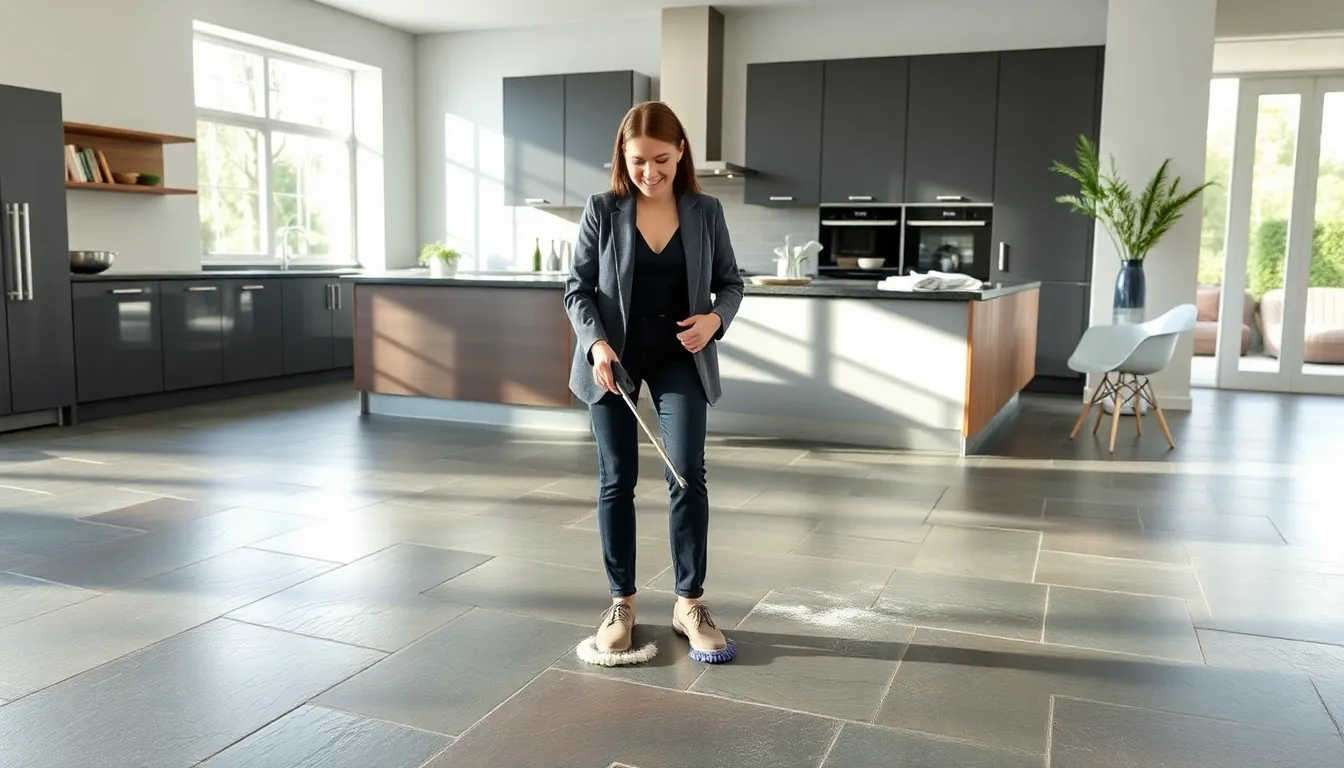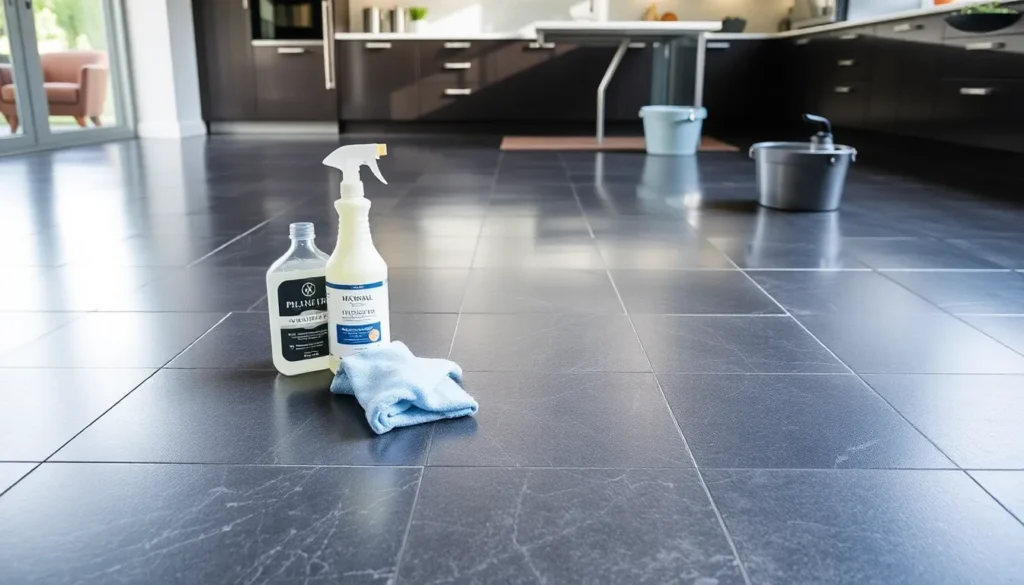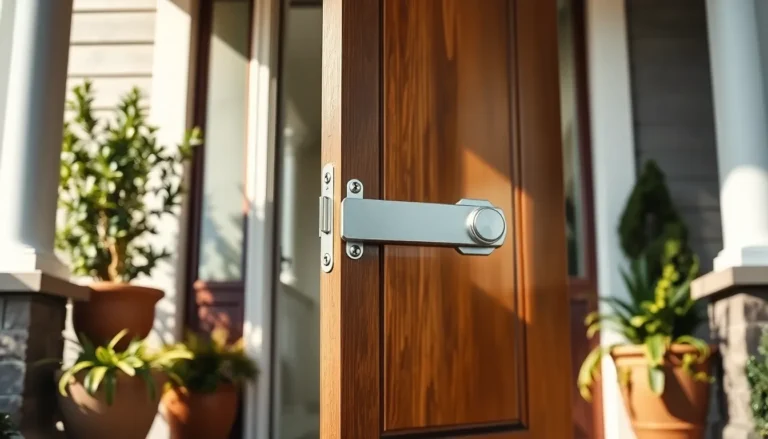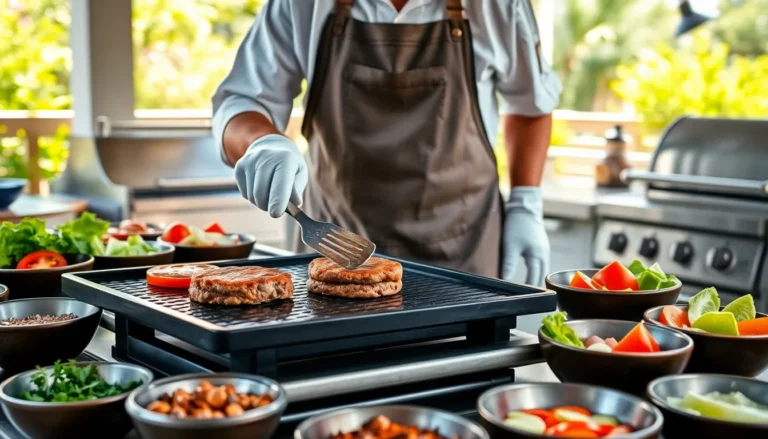Table of Contents
ToggleCleaning slate floors might sound like a chore, but it doesn’t have to be as daunting as it seems. Imagine if your floors could shine like the day they were installed without breaking a sweat. Sounds too good to be true? Well, it’s not. With the right techniques and tools, anyone can turn their scuffed slate into a gleaming surface that even your in-laws would admire. Plus, who doesn’t want a pristine floor to show off? So, let’s jump into the world of slate cleaning with enthusiasm and a sprinkle of humor.
Understanding Slate Floors

Slate is a natural stone widely appreciated for its unique appearance and durability. When one thinks about slate, they might picture a rustic cabin, a soothing spa, or a sleek, modern kitchen. This stone comes in a variety of colors, from muted greys to vibrant shades of green and purple. It’s important to understand that slate has a variety of finishes, which can affect how it’s cleaned. For instance, honed slate has a matte finish while polished slate has a gloss that reflects light beautifully. Knowing your specific type can help tailor your cleaning process to keep it looking its best.
Benefits Of Slate Flooring
Slate flooring offers several advantages, making it a popular choice for both homes and businesses. First, it is incredibly durable. This stone can withstand heavy foot traffic, which is perfect for busy households or commercial spaces. Second, slate is resistant to scratches and marks. Unlike softer flooring options, it holds up well against pet claws and dropped items. Also, slate is naturally slip-resistant, which is a significant safety feature. Let’s not forget its aesthetic appeal: each tile has a unique pattern, adding character to any room. All in all, investing in slate flooring proves beneficial for longevity, style, and maintenance.
Essential Tools And Supplies For Cleaning Slate Floors
Before plunging into the cleaning process, gather your tools. Here’s a handy checklist of essentials:
- Broom or vacuum: For regular sweeping of dust and debris. A vacuum with a hard floor attachment works wonders.
- Mop: A microfiber mop is gentle yet effective on slate.
- Bucket: Not just for holding water, but useful for mixing cleaning solutions.
- pH-neutral cleaner: Look for a cleaner made specifically for natural stone. Avoid harsh chemicals that can damage the slate.
- Soft cloths: Microfiber cloths are great for buffing and drying after cleaning.
- Sealer: This isn’t required every time, but having a good-quality sealant is essential for maintenance.
Step-By-Step Guide To Cleaning Slate Floors
Now, let’s get to the fun part – cleaning those slate floors. Here’s a step-by-step guide to ensure optimal cleanliness:
- Sweep or vacuum thoroughly: Dust bunnies might seem harmless, but they can scratch your slate when mopped.
- Choose the right cleaner: Mix your pH-neutral cleaner with water according to package instructions in the bucket.
- Dampen a mop: Soak the mop in the cleaner solution, then wring it out so it’s not dripping wet. Excess water can seep into the seams and damage the slate.
- Mop the floor: Start in one corner of the room and work your way towards the exit. Make sure to cover all areas, allowing the cleaner to lift dirt and grime.
- Rinse the mop frequently: Change the water as needed to avoid spreading dirt around.
- Dry the floor: After mopping, use dry microfiber cloths to buff the surface, removing any remaining moisture and enhancing shine.
Maintaining The Shine And Longevity Of Slate Floors
Keeping slate floors shiny and long-lasting requires regular upkeep. Here’s how to maintain their beauty:
- Regular sweeping or vacuuming: This removes dirt before it can damage the slate.
- Spot clean spills immediately: Slate is somewhat porous, so quick action can prevent stains.
- Periodically reseal: Depending on foot traffic, resealing every 1 to 3 years can preserve the finish and protect against stains.
- Use rugs and mats: Placing mats at entryways can catch debris and minimize wear on the floor.
Common Mistakes To Avoid When Cleaning Slate Floors
Even seasoned cleaners can make mistakes. Here are some common pitfalls to watch out for:
- Using vinegar or acidic cleaners: They can damage slate’s surface, leading to dullness or discoloration.
- Skipping the sealer: Over time, unsealed slate absorbs spills and stains, making it harder to clean.
- Mopping with excessive water: Too much water can cause issues with grout and lead to mold growth.
- Ignoring the need for professional help: Sometimes slate floors may need a deep clean from a professional, especially with extensive staining or wear. Don’t hesitate to reach out.





